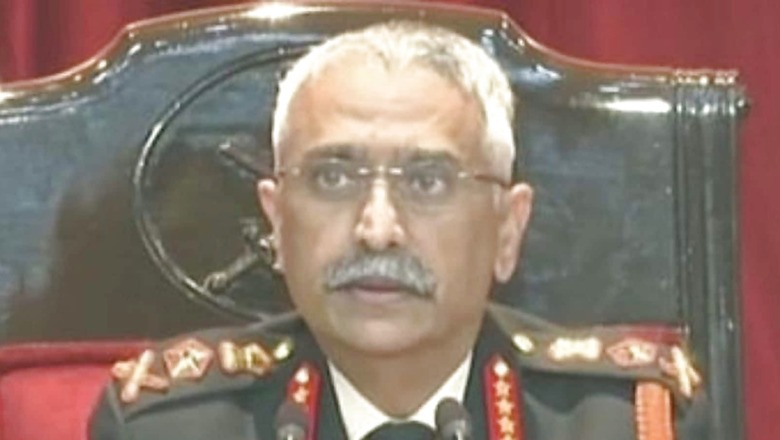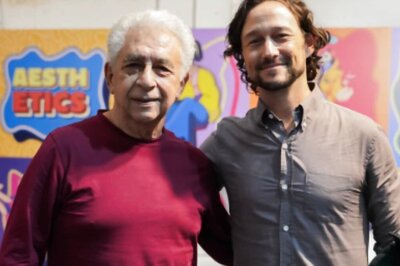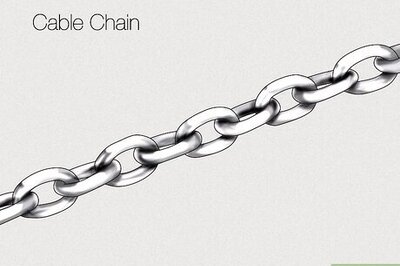
views
China’s new border law, which came into effect on January 1, is unlikely to have military ramifications, but in case of one, the Army is more than adequately prepared to handle it with all the capability enhancements and rebalancing of forces it has undertaken in the last one-and-a-half year, Army chief Gen. MM Naravane said at a virtual press conference on Wednesday ahead of the Army Day on January 15.
“As far as military ramifications are concerned, we are still looking into that aspect. Should there be any likely fallout in the military domain, we are more than adequately prepared to deal with it with whatever steps we have taken and rebalancing (of forces) we have carried out,” he said.
The Army chief said the Ministry of External Affairs has also made it clear that China’s new border law will have no bearing on the bilateral relations, and India does not accept it as such.
“We have many other agreements and protocols which pre date this law and any law which is not legally tenable and not in keeping with the other agreements we’ve had in the past, obviously cannot be binding on us,” he said.
The Army last year had taken a major call to rebalance its forces. Among other efforts, the Army had decided to dedicate two of its four strike corps for the mountains facing China.
“In line with our operational realities, we have undertaken reorganisation and rebalancing of forces. Re-orientation of additional forces to the Northern Borders, has been carried out while retaining our punitive strike capability, along the Western Front,” Gen. Naravane said.
In his opening remarks, he said threat assessments and internal deliberations, have resulted in re-organisation and re-alignment of forces to ensure territorial integrity and to cater for the major augmentation of the Chinese PLA forces and military infrastructure.
Although partial disengagement was carried out mutually by India and China after sustained dialogue, the threat by no means has reduced, said Gen. Naravane.
He said it is clear that the Army’s response to Chinese attempts to unilaterally change the status quo was robust and India was able to thwart this design.
“This also gave us an opportunity to review our operational plans and based on that a lot of activities were undertaken to augment our capabilities not only in eastern Ladakh but all along the northern front,” he said.
He said the Army took a holistic view of the entire northern front, which included not only augmentation of forces but also of infrastructure, weapons and equipment, which has resulted in increase in the Army’s capabilities in the northern front in the last 1.5 years.
“We have inducted additional troops, made various infrastructure and billeting facilities for as many as 25,000 additional troops, which had gone into that area,” he said. Infrastructure also includes roads, tunnels as well as storage facilities for ammunition and fuel, he added.
Additional facilities to cater to increment of troops, which might take place in the future, was also created.
On 14th Round of Military Commanders’ Talks
Referring to the 14th round of military commanders’ talks, taking place today, General Naravane said it shows that “we can resolve our differences through dialogue”.
He said in the current round, both sides have made their opening remarks and after a short break they have got down to discussing specific agenda for the meeting, adding that he is yet to receive a further update.
He said the fourth and the fifth round of talks resulted in resolving the issues at PP-14 post which a number of other rounds took and it was by the ninth and tenth round of talks that issues pertaining to the north and south bank of Pangong Tso as well as those related to the Kailash ranges were resolved. The issue at PP-17 was resolved during the 12th round of talks.
He said the talks help both sides understand each other’s viewpoints, perceptions and differences go down with each meeting. “Then, we reach an agreement, which is based on mutual and equitable security and is acceptable to both sides and is a win-win for both,” he said.
He also said to expect every round will have an outcome is also “unreasonable”. “A number of rounds will be required to deal with the situation and resolve them one at a time.”
He said once the remaining issues at Hot Springs are resolved, other problems, which predate the current standoff can be discussed.
He said the talks with China has been a whole of nation effort, which includes engagement at the political and diplomatic levels as much.
About Border Infra and Permanent Deployment
Gen. Naravane said the deployment of a large number of PLA forces by the Chinese in eastern Ladakh is the root cause of the situation. “Now that they are there and have made a lot of infrastructure, it remains to be seen whether they will permanently station themselves there, or whether they will be amenable to some kind of de-induction in the times to come,” he said.
He said any de-induction will have to follow a few laid out steps, which first comprises disengagement in friction areas along the LAC, confidence building, followed by de-escalation which is moving back to the depth from being right on the LAC.
“Whatever we decide to do, will be based on the principle of mutual and equal security. Till we reach there, we will have to be prepared to stay there for as long as required,” he said.
He also said China has been upgrading its infrastructure along the LAC, but that is being matched equally by the Indian side.
“We have been able to meet these twin challenges of Covid-19 and eastern Ladakh, and yet, at the same time, also meet the challenge on the western front of proxy war.
Read all the Latest India News here


















Comments
0 comment